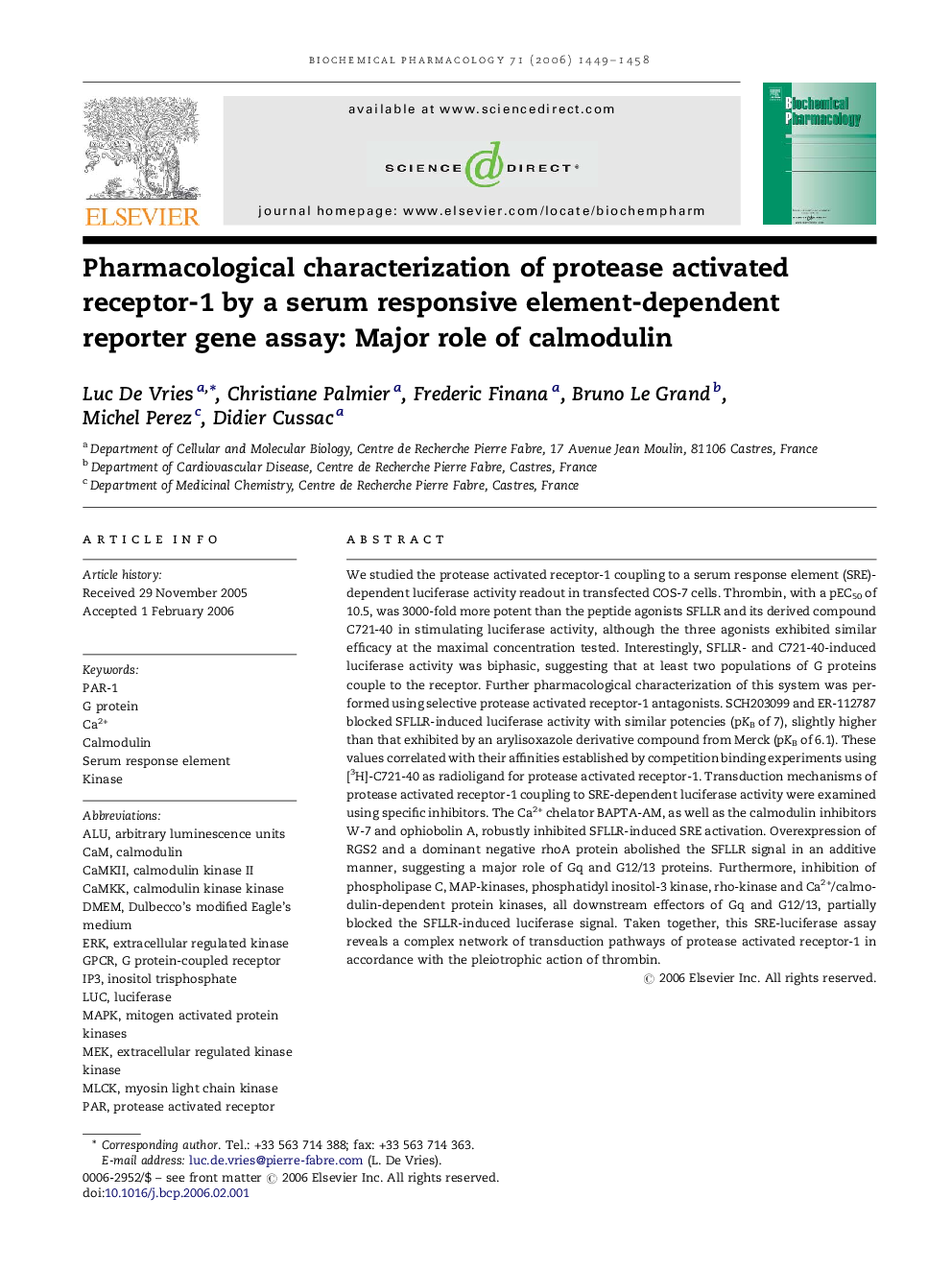| Article ID | Journal | Published Year | Pages | File Type |
|---|---|---|---|---|
| 2515450 | Biochemical Pharmacology | 2006 | 10 Pages |
We studied the protease activated receptor-1 coupling to a serum response element (SRE)-dependent luciferase activity readout in transfected COS-7 cells. Thrombin, with a pEC50 of 10.5, was 3000-fold more potent than the peptide agonists SFLLR and its derived compound C721-40 in stimulating luciferase activity, although the three agonists exhibited similar efficacy at the maximal concentration tested. Interestingly, SFLLR- and C721-40-induced luciferase activity was biphasic, suggesting that at least two populations of G proteins couple to the receptor. Further pharmacological characterization of this system was performed using selective protease activated receptor-1 antagonists. SCH203099 and ER-112787 blocked SFLLR-induced luciferase activity with similar potencies (pKB of 7), slightly higher than that exhibited by an arylisoxazole derivative compound from Merck (pKB of 6.1). These values correlated with their affinities established by competition binding experiments using [3H]-C721-40 as radioligand for protease activated receptor-1. Transduction mechanisms of protease activated receptor-1 coupling to SRE-dependent luciferase activity were examined using specific inhibitors. The Ca2+ chelator BAPTA-AM, as well as the calmodulin inhibitors W-7 and ophiobolin A, robustly inhibited SFLLR-induced SRE activation. Overexpression of RGS2 and a dominant negative rhoA protein abolished the SFLLR signal in an additive manner, suggesting a major role of Gq and G12/13 proteins. Furthermore, inhibition of phospholipase C, MAP-kinases, phosphatidyl inositol-3 kinase, rho-kinase and Ca2+/calmodulin-dependent protein kinases, all downstream effectors of Gq and G12/13, partially blocked the SFLLR-induced luciferase signal. Taken together, this SRE-luciferase assay reveals a complex network of transduction pathways of protease activated receptor-1 in accordance with the pleiotrophic action of thrombin.
